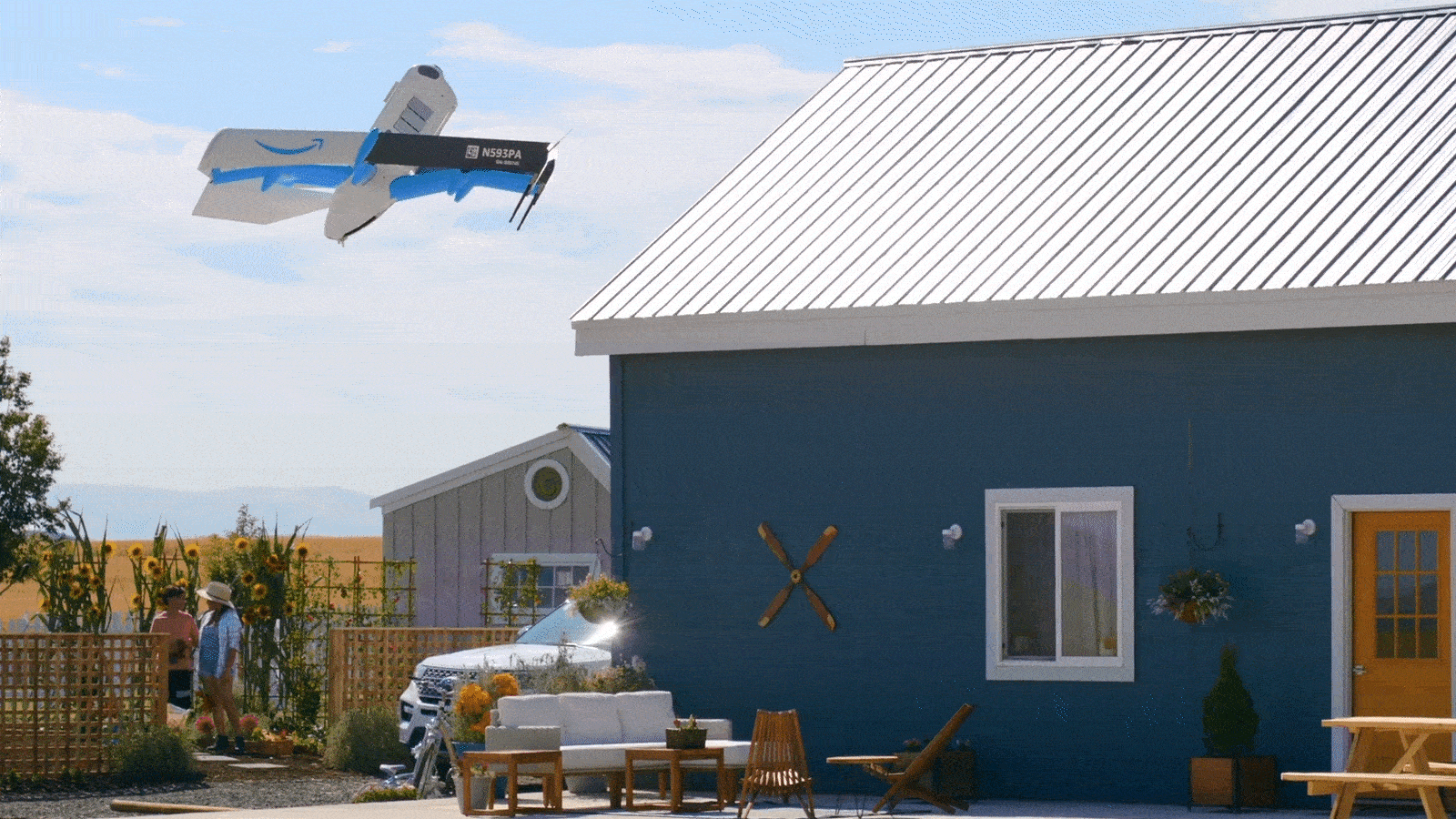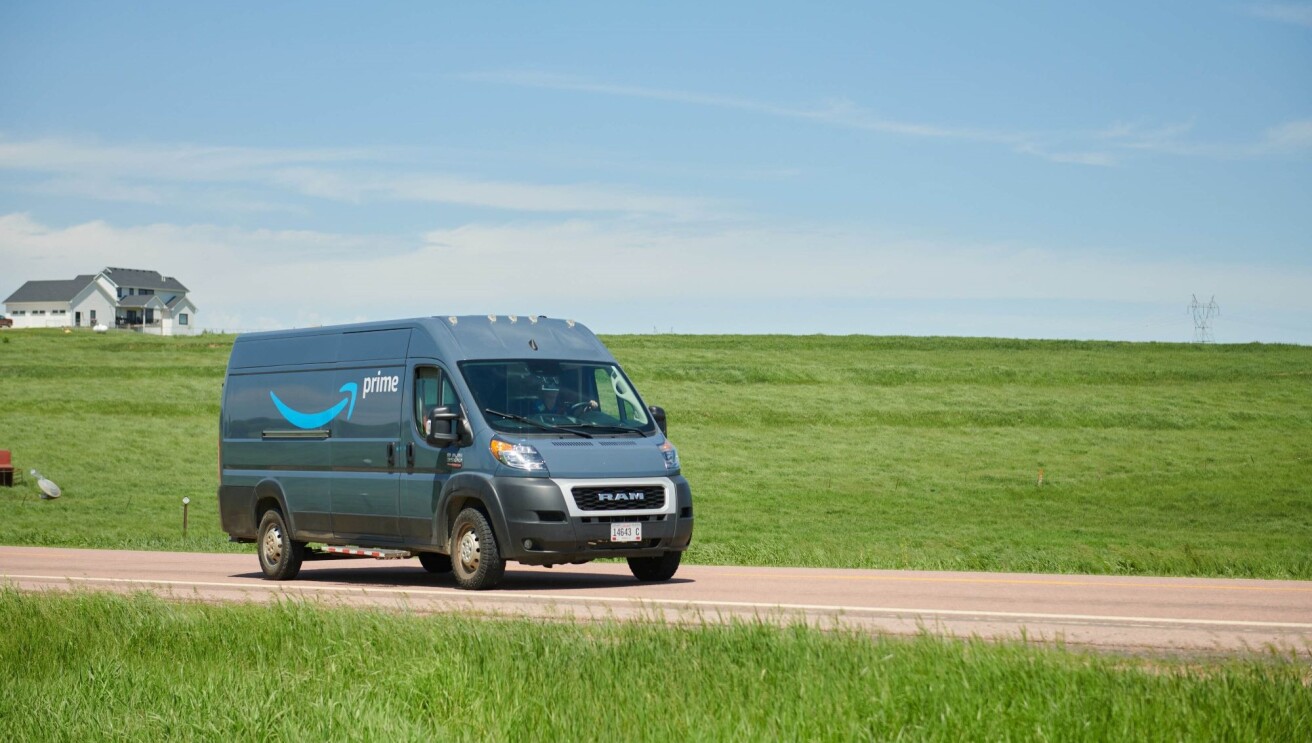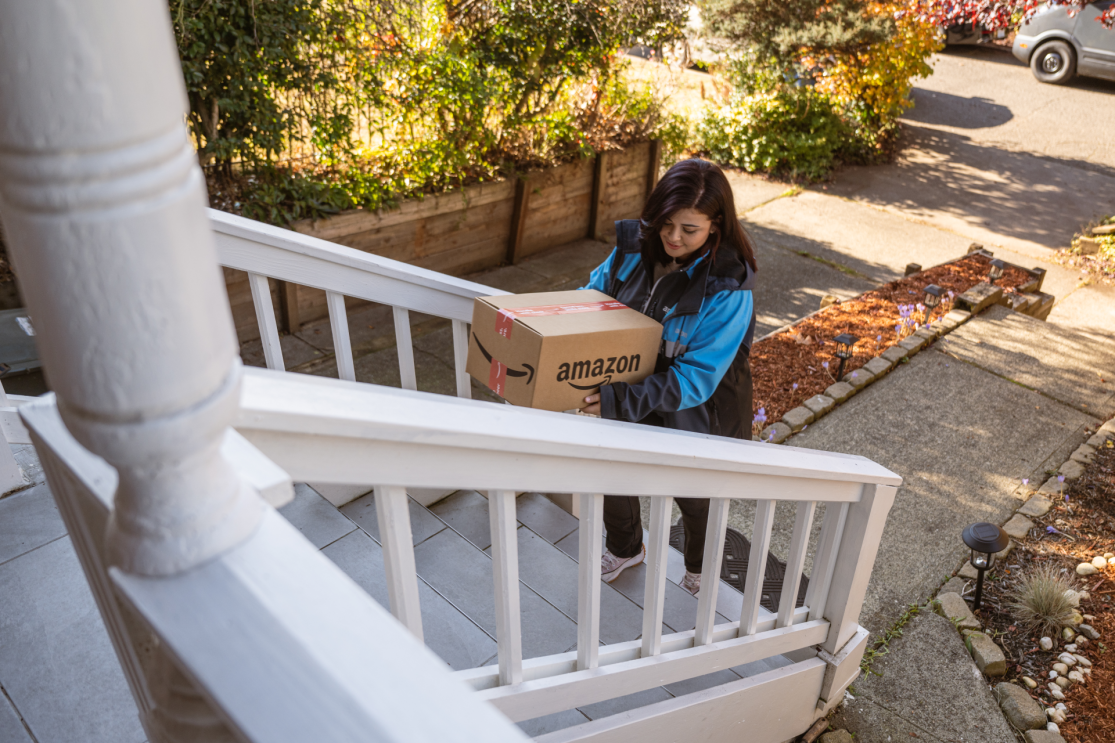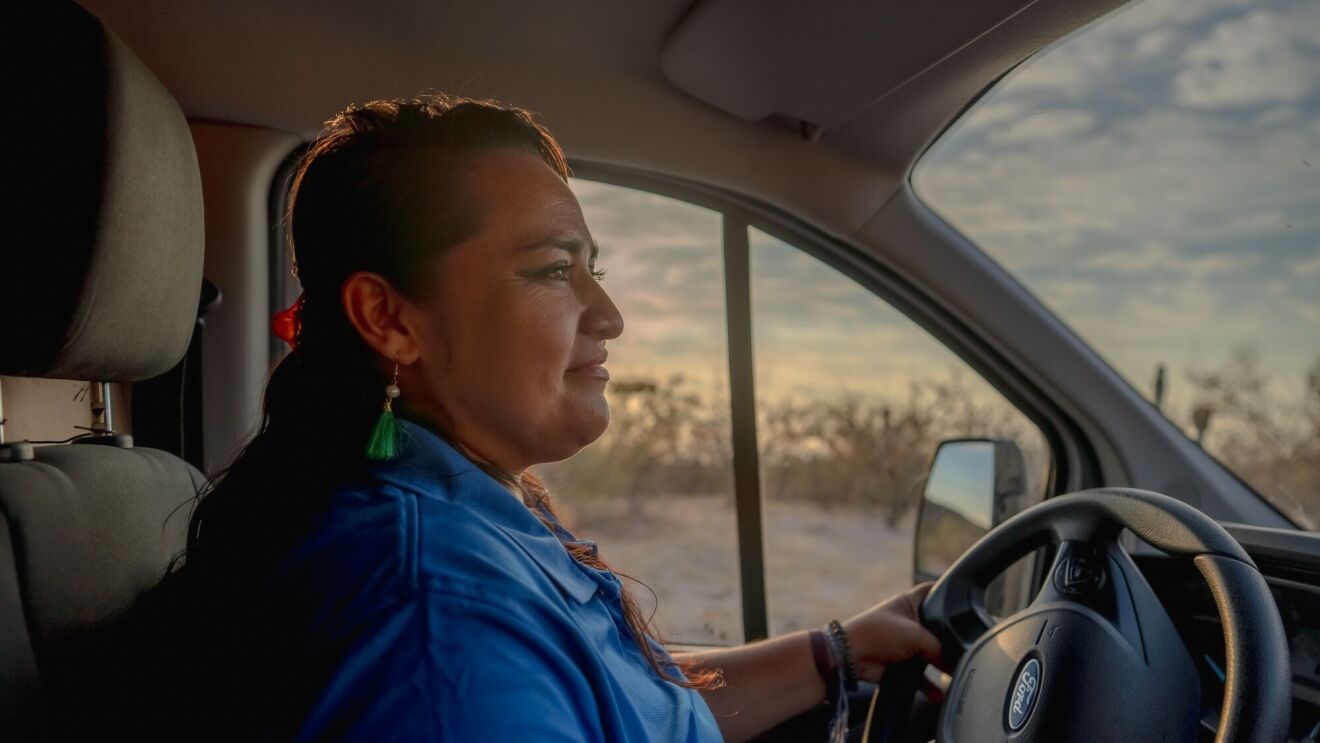Amazon’s drone delivery program is rapidly innovating to safely deliver more products to more customers at ultra-fast speeds. Prime Air drones have already delivered thousands of items to customers in 60 minutes or less, and we’re excited to enter the next stage of the program’s evolution with faster, quieter drones in more cities in the U.S., Italy, and the UK.
Drone deliveries currently operate from dedicated Prime Air sites, but soon, all new sites will be located next to our existing network of Same Day delivery stations in the U.S. and Amazon Fulfillment Centers in Europe. This proximity and our next-generation MK30 drone will allow us to serve more customers.
We visited the site in College Station, Texas, to see how things operate today and talk to senior Prime Air leaders about what’s on the horizon. Here’s an exclusive look inside Amazon’s drone delivery operations.

The journey of a drone delivery begins with fulfillment. Items are stored on shelves inside the drone facility while they wait to be purchased by a customer. If you’re familiar with the current process inside our fulfillment centers, you might notice that this is a bit different from how we typically store orders, but it won’t be for long.

“Our current small format drone fulfillment centers allow us to pick, pack, and deliver products to customers in less than 60 minutes with minimal complexity,” said David Carbon, vice president of Prime Air. “Our integration into the Same-Day network will allow us to bring ultra-fast delivery to even more customers and increases selection by 10X.”

When an order comes in, an employee picks the purchased item from the shelf and brings it to the packing station. The packing station includes specialized materials for drone deliveries. Drone delivery boxes have customized cushioning technology at the bottom that we call a “trampoline,” to protect the item during delivery.

Once the item is packed, the employee slides it down the chute, officially moving the item out of the fulfillment stage and into the delivery phase.

Next up, an employee on the delivery side picks up the package and brings it out to the launch pad.

An employee also brings a fresh battery to prepare the drone for launch. Using a sustainable, electric power source for our drones is critical as we work toward decarbonizing Amazon’s fleet to achieve net-zero carbon by 2040.

Safety is a top priority. Employees carefully inspect the drone from top to bottom to ensure it’s safe to fly. The detailed inspection checks everything from the propellers to the frame, and employees will stop operations and swap out the drone if they detect anything outside of the norm.

Once it’s deemed safe to fly, employees load the battery and the package inside the drone, then follow a detailed protocol to launch it up to 400 feet into the air.

Our delivery drones are highly automated, meaning they fly pre-planned missions with careful guidance from the team. The operator in command works from a control room located just behind the launch pad to ensure a safe flight path for each drone.

Once the drone is in flight, it takes off at a maximum of 65 miles per hour, soaring through the air and bypassing traffic to complete the delivery in 60 minutes or less.

Once the drone reaches a customer’s residence, it stops and slowly descends while avoiding trees, power lines, and other structures.

The drone’s Sense and Avoid technology also ensures the delivery area is clear of obstacles. The drone’s door glides open and the package is released onto the landing pad placed at the customer’s residence. Once the package has been delivered, the drone ascends to begin its flight back to the drone fulfillment center.

The new MK30 drone will be even faster, and will also feature improved range to serve more customers, flying twice as far as previous models. It will also be quieter and smaller, which will help our drone delivery program more seamlessly integrate with the neighborhood environment.

As it flies over the facility, the drone finds its allocated landing pad and employees monitor the landing to ensure safety.
Once the drone lands, employees carefully remove it from the landing pad and inspect it before it’s reloaded for the next delivery.

Amazon remains committed to our long-term vision of delivering 500 million packages annually by drone, by the end of this decade. As we build to scale, we are focusing on bringing drone delivery to more populated areas and integrating our drone delivery technology into our existing transportation network.
Learn more about the exciting innovations coming to Amazon’s drone delivery program:
Trending news and stories












